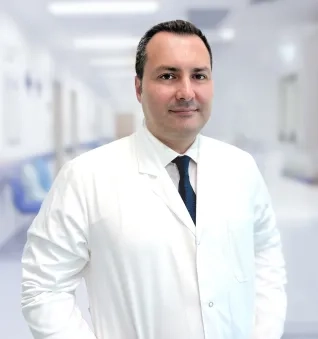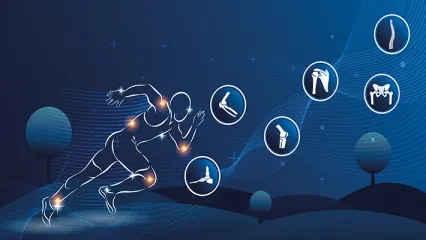Alo Yeditepe
Alo Yeditepe
Sports Injuries
“Tendon-muscle” injuries are in the first place among “sports injury” admissions to emergency services and it is accepted that they constitute 30% of all admissions. They are followed by injuries such as fractures, skin lesions-contusions and burns in the order of admission.
Pay Attention to These Complaints about Sports Injuries!
Regionally, ankle injuries come first, followed by finger and facial injuries. Ankle injuries account for 12% of all injuries. If the foot cannot be used for taking a step after an ankle injury, if there is severe pain-swelling, numbness, or bruising, if joint integrity is impaired and instability is present, a doctor should be consulted and professional help should be sought.
How are Sports Injuries Treated?
The first step of first aid and emergency treatment is rest, ice application, compressive bandage, and elevation of the injured extremity.
Tendon injuries are also an important topic in sports injuries, and most frequently Achilles tendon problems are observed.
The Achilles tendon is the strongest in the body, extending from the back of the knee to the back of the heel bone. Since it is observed in a wide range from tendonitis to complete tears, there are different treatment options from conservative treatments to surgical applications.
Cramps and muscle spasms are very common in sportive activities, their exact cause is not known although they are so common, and it is accepted that they may develop due to strain-fatigue of the muscles, lack of training-conditioning, dehydration, electrolyte deficiency, or overload of muscles without warm-up. Although cramps are very painful conditions that develop suddenly, you should be calm when they occur, it should be known that they will regress spontaneously, and stretching the muscle that has undergone spasm accelerates recovery.
The most common complaint in runners and amateur running sports is "knee pain", often accompanied by pain, swelling, and increased complaints when going up and down stairs. Running creates a problem in the knee cartilage, which is forced by loads several times the body weight, and it needs evaluation and treatment by an orthopedist.
In order to prevent this situation, which is defined as "runner's knee", choosing "sports shoes and the floor on which sports are performed" is important. In addition, strengthening of the muscles around the knee and stretching exercises should be done. It is important to warm up and stretch the muscles before starting the run, and to "cool down" after the run. The training distance should also be increased gradually, for example, a 10% increase in distance may be recommended once a week.
The foot problem known as plantar fasciitis is also common in runners.
Besides, runners, dancers, jumpers, and aerobic exercisers experience pain in the front of the legs, which requires professional medical diagnosis and treatment. In this condition, which is called shin splint, low vitamin D levels are observed in some cases, but its exact cause is unknown.
"Back problems" are encountered most commonly in golf and weightlifting athletes, as both of them overload the waist region during sportive activities.It is believed that athletes' problems such as tennis and golfer's elbow, runner's knee, and shin splints develop due to "overloads". Solving these chronic problems requires specialist support.
While the most common knee injuries are medial collateral and cruciate ligament injuries in skiers, “snowboard” injuries are encountered in the hand and wrist.
The most serious and fatal sports injuries are “head injuries” and it is observed that they are most frequently encountered in those who engage in bicycle and motorcycle sports. It is possible to prevent 85% of these serious injuries with the use of appropriate helmets and headgear.
Before the start of sports activities, the "lung respiratory capacity" is increased, the muscles are prepared for challenging exercises, their temperature is increased, and also blood circulation is adjusted, with applications similar to the sport to be done, known as "warm-up", but with lower intensity. In this way, sports injuries should be tried to be prevented. Muscle stretching exercises should be done after the completion of the exercise, there is no scientific evidence that stretching before training prevents sports injuries, but stretching exercises are important, either after the training or before the training, and complete warm-up and then stretching should be done.
Precautions to Be Taken to Prevent Sports Injuries
- Excessive activities and repetitive strains should be avoided,
- Attention should be paid to the “warm-up” period before training or activity,
- Stretching exercises should be done after this warm-up and after training,
- It is important to choose shoes and renew them before they wear out too much,
- Floor selection is important,
- It is important to have a balanced diet, rest regularly, not be dehydrated, and pay attention to the electrolyte balance,
- The level and duration of exercise should be increased gradually.
Diagnosis and treatment of sports injuries requires teamwork, it would be appropriate to have Orthopedics and Traumatology Specialists, Sports Physicians, Physical Therapy and Rehabilitation Specialists, Physiotherapists, and other specialists related to the injured organ and tissue in the team.
This content was prepared by Yeditepe University Hospitals Medical Editorial Board.
”
See Also
- What are Hip Joint Diseases? Causes and Treatment
- Robotic Hip Replacement Surgery
- What is Scoliosis? Exercise Methods in Scoliosis Treatment
- Knuckle Cracking Can Be Dangerous When It Becomes a Habit!
- Things to Consider When Walking in Snowy Weather
- What is Hallux Rigidus (Stiff Big Toe/Toe Arthritis)? Symptoms and Treatment
- What is Hallux Valgus (Bunion)? How is it Treated?
- What is a Bone Tumor? Bone Tumor Symptoms
- Meniscus and Cartilage Transplantation Can Be Done at the Same Time
- Benefits of Being Limber
- What is Crooked Leg? Can Crooked Legs Be Treated?
- What Causes Shoulder Dislocation? Shoulder Dislocation Treatment
- Knee Pain
- Wrist Pain Causes and Treatment
- Benefits of Physiotherapy and Rehabilitation in Spinal Cord Injury
- Ergonomics in Automobiles Prevents Accidents
- Don't Underestimate Bone Pain That Doesn't Make You Sleep and Doesn't Relieve With Medication
- Joint Pain and Causes of Joint Pain
- Walking and Returning to Social Life After Knee Replacement Surgery
- Fibromyalgia in Children
- What Are the Advantages of Robotic Knee Replacement Surgery?
- Robotic Knee Prosthesis Surgery
- Spinal Cord Injuries and Symptoms
- Why Does Ankle Pain Occur? What Is the Treatment?
- What Causes Hip Pain? How Does Hip Pain Go Away?
- The Usage Area of Robotic Surgery Expands in Orthopedic Surgeries
- Higher Risk of Anterior Cruciate Ligament and Ankle Injury in Female Athletes
- Patients Who Undergo Joint Replacement Surgery Can Stand Up and Walk the Next Day
- Lumbar Disc Herniation (Herniated Disc)
- Spinal Fractures
- Big Toes Can Be A Big Problem!
- What is Synovitis in Joints?
- Hip Osteoarthritis and Hip Prosthesis
- Hip Impingement Syndrome
- What is the Future of Treating Cartilage Problems?
- Not Only Athletes Suffer from Meniscus Tears!
- Is Cartilage Damage More Common in Those Who Run for Long Periods?
- Beware If Your Shoulder Or Neck Pain Lasts Longer Than Two Days After Swimming!
- Mistakes While Swimming Can Cause Shoulder Pain
- What is a Stress Fracture? How to Treat Stress Fracture?
- Myths About Fractures
- Vitamin D Deficiency May Be The Cause Of Your Joint Pain
- The First Onset of Pain in Cartilage Damage in the Knee Should Not Be Overlooked
- Have Your Baby Take Their First Steps in Good Health
- Heavy School Bags Can Cause Pain in the Lower Back, Shoulders, and Hands!
- Cartilage Transplantation from Donor Has Been Started to Perform in Turkey
- Working From Home Increases Waist and Neck Problems
- First Cartilage Transplant from a Donor
- Pay Attention to the Pain That Occurs in the Front Part of Your Knees While Playing Sports!
- 8 Common Misconceptions About Sports Injuries
- Young Patient Who Could Not Walk Due to Cartilage Damage Recovered With Cartilage Transplantation
- Knee Arthritis
- What is Lymphedema?
- The Way to Peace: Yoga
- Biopsy for Bone and Soft Tissue Tumors
- Knee Pain
- Crunching in the Kneecap May Be a Sign of Calcification
- Injured Athletes Can Return To Sports With Cartilage Transplant
- Treatment of Knee Arthrosis Varies According to the Person
- A Lack of Attention to Sports Injuries in Children May Affect Their Development
Alo Yeditepe







